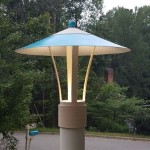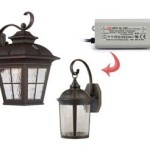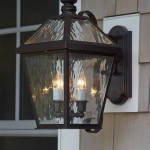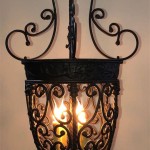Indoor and Outdoor Lighting Systems: Illuminating Every Space
Lighting is an essential element of any space, whether it be a cozy home, a bustling office, or a sprawling outdoor area. It provides visibility, enhances ambiance, and can even influence mood and behavior. With the advancements in technology and design, there are now a wide array of indoor and outdoor lighting systems available to meet diverse needs and preferences. This article delves into the key aspects of these systems, exploring their components, functions, and considerations for optimal illumination.
Key Components of Lighting Systems
Both indoor and outdoor lighting systems share common components, but the specific types and configurations vary based on the application and desired effects. Core elements include:
- Light Source: This is the primary element that produces light. It can be incandescent, fluorescent, LED, or even natural light, each offering unique characteristics in terms of brightness, color temperature, and energy efficiency.
- Fixture: The fixture houses the light source and provides a protective enclosure, often incorporating a design element. Fixtures can be recessed, surface-mounted, pendant, or track-mounted, depending on the location and aesthetic preferences.
- Control System: This element regulates the operation of the lighting system, allowing for dimming, scheduling, and remote control. Modern control systems can integrate with smart home platforms for enhanced convenience and automation.
- Wiring and Electrical Components: Proper wiring and electrical components are essential to ensure safe and reliable operation of the lighting system. This includes circuit breakers, switches, and appropriate cable types.
Indoor Lighting Systems: Creating Ambiance and Functionality
Indoor lighting systems play a crucial role in enhancing the functionality and ambiance of various spaces within a building. They can be categorized based on their purpose and location:
General Lighting:
General lighting provides overall illumination for a room, allowing for basic visibility and task performance. Common examples include ceiling fixtures, chandeliers, and recessed lights. The choice of light source, fixture type, and brightness should consider the room's size, ceiling height, and intended activities.
Task Lighting:
Task lighting focuses on specific areas where detailed work or activities are performed. This includes desk lamps, under-cabinet lighting, and accent lighting for artwork or display shelves. These lights provide concentrated illumination, reducing eye strain and enhancing productivity.
Accent Lighting:
Accent lighting highlights specific features, objects, or architectural details, creating visual interest and enhancing the overall aesthetics of a space. It is often used for highlighting artwork, sculptures, or architectural elements.
Mood Lighting:
Mood lighting uses soft, diffused light sources to create a specific atmosphere or emotion. This can be achieved through dimmable lights, color-changing bulbs, or decorative fixtures. The choice of light source and color temperature plays a significant role in shaping the desired mood, be it relaxing, romantic, or energetic.
Outdoor Lighting Systems: Enhancing Security and Beauty
Outdoor lighting serves various purposes, ranging from enhancing security and safety to creating a visually appealing and welcoming exterior. Outdoor lighting systems are generally categorized as follows:
Security Lighting:
Security lighting aims to deter crime and illuminate areas that require heightened visibility. This can be achieved through motion sensor lights, floodlights, and high-intensity spotlights strategically placed around the perimeter of the property.
Landscape Lighting:
Landscape lighting highlights the beauty of gardens, pathways, and architectural features, creating a visually appealing and inviting outdoor space. Different types of fixtures, such as path lights, spotlights, and uplighting, can be used to accentuate specific details and create visual interest.
Architectural Lighting:
Architectural lighting emphasizes the unique features of a building's facade, enhancing its visual appeal and highlighting architectural details. This often involves using spotlights, uplights, and downlights to illuminate key elements and create a dramatic effect.
Pathway Lighting:
Pathway lighting provides safe and illuminated pathways for pedestrians. This includes using path lights, bollard lights, and string lights along walkways and steps, ensuring visibility and safety during nighttime hours.
As with indoor lighting, the choice of light source, fixture, and control system for outdoor lighting should be carefully considered. Factors such as weather resistance, durability, energy efficiency, and aesthetic harmony with the surrounding landscape play a crucial role in selecting the optimal system.

Ring Lighting Indoor Outdoor Home Switches And Bulbs

How To Balance Indoor And Outdoor Lighting Popular Photography

19 Stylish Outdoor Lighting Ideas The Best Patio

The 3 Best Smart Outdoor Lights For Backyards Of 2024 Reviews By Wirecutter

Ring Lighting Indoor Outdoor Home Switches And Bulbs

Outdoor Garden Decorative Lights

Illuminate Your Landscape A Guide To Outdoor Lighting Top Quality Indoor Solutions In Carmel Pacific Grove Pebble Beach And Monterey

Making Smart Choices With Intelligent Lighting Cree

Smart Outdoor Lighting Hue Philips Us

How To Build A Poe Led Lighting System For Your Office Fastcabling







